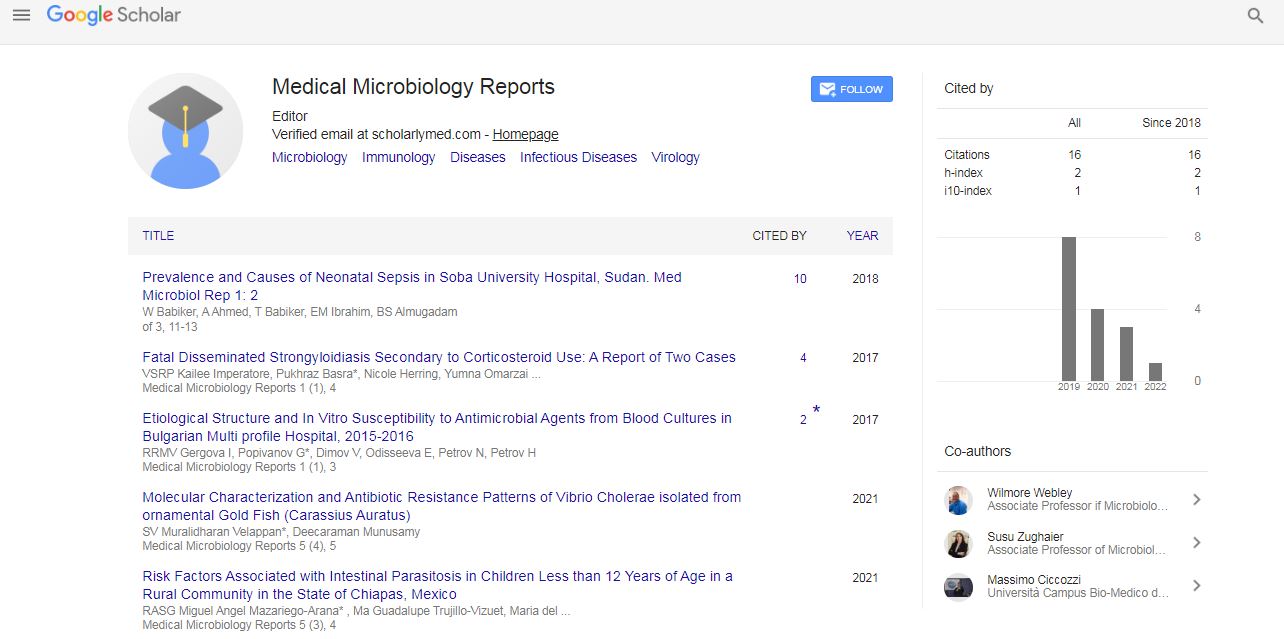Opinion Article, Med Microbiol Rep Vol: 7 Issue: 2
Mycological Exploration of the Function of Fungi in Ecosystems
Camenzind Vieira*
Department of Natural Sciences, Regional University of Blumenau, Blumenau, Santa Catarina, Brazil
*Corresponding Author: Camenzind Vieira
Department of Natural Sciences, Regional University of Blumenau, Blumenau, Santa Catarina, Brazil
E-mail: camvie@rub.br
Received date: 22 May, 2023, Manuscript No. MMR-23-107460;
Editor assigned date: 25 May, 2023, PreQC No. MMR-23-107460 (PQ);
Reviewed date: 08 June, 2023, QC No. MMR-23-107460;
Revised date: 15 June, 2023, Manuscript No. MMR-23-107460 (R);
Published date: 22 June, 2023, DOI: 10.4172/mmr.1000341
Citation: Vieira C (2023) Mycological Exploration of the Function of Fungi in Ecosystems. Med Microbiol Rep 7:2
Description
Fungi, often disregarded and neglected, play vital roles in shaping and maintaining ecosystems. Mycology, the study of fungi, delves into the intricate analogies between the organisms and their environments. By exploring the functions of fungi in ecosystems, people gain a greater awareness of the ecological significance and the indispensable services they provide.
Fungi are a diverse group of organisms that occupy a unique niche in the web of life. They can be found in nearly every ecosystem on Earth, from forests and grasslands to aquatic environments and even within the bodies of other organisms. Fungi are heterotrophic, meaning they obtain their nutrients by breaking down organic matter. Because of their vital function as decomposers, organisms are able to recycle nutrients, promoting the cycling of carbon, nitrogen and other vital elements in ecosystems.
One of the primary functions of fungi in ecosystems is the decomposition of organic matter. Fungi secrete powerful enzymes that break down complex organic compounds, such as dead plants, animals and other organic debris. Through this process, known as saprotrophic decomposition, fungi transform organic material into simpler forms that are easy to absorb and recycle by other organisms. Without fungi, the accumulation of organic waste would be detrimental to ecosystems, reducing the availability of nutrients and productivity.
Fungi also form mutualistic associations with plants, forming mycorrhizae. Mycorrhizal fungi establish a symbiotic relationship with the roots of most plants, creating a vast network of fine, thread-like structures called hyphae. These hyphae extend into the soil, effectively increasing the surface area for nutrient uptake. In return, the fungi receive essential sugars produced by the plant through photosynthesis.
This mutualistic association enhances nutrient acquisition for both the fungi and the plant, promoting plant growth and survival.
Along with decomposition and mutualistic partnerships, fungi engage in symbiotic relationships with other organisms. Endophytic fungi, for example, reside within the tissues of plants without causing harm. These fungi confer benefits to the host plants, such as enhanced resistance to pathogens, increased tolerance to environmental stresses and improved nutrient consumption. Endophytic fungi have been found to produce bioactive compounds with potential applications in agriculture, medicine and biotechnology.
Fungi also act as biological control agents, helping to regulate populations of pests and pathogens. Certain fungi are parasitic and can infect and kill insect pests that threaten crops and forests. These entomopathogenic fungi offer a natural and sustainable alternative to chemical pesticides, reducing the environmental impact of pest control practices. Moreover, fungi can produce secondary metabolites with antimicrobial properties, serving as sources for the development of novel antibiotics and antifungal drugs.
Furthermore, fungi play a vital role in the formation and stability of soil. By dissolving organic matter, fungi contribute to soil aggregation, forming a crumb-like structure that improves soil porosity, water-holding capacity and nutrient availability. Fungal hyphae also penetrate through the soil, forming an extensive network known as the "mycelial highway." This complex structure allows for the movement of necessary materials and serves as a conduit for the communication of information and chemical reactions between plants and diverse organisms.
Mycorrhizal fungi and their hyphal coalitions are essential components of healthy soil ecosystems. They enhance soil fertility, support plant growth and contribute to overall ecosystem resilience. Losses in fungal diversity and abundance due to factors such as habitat destruction, pollution and climate change can have significant consequences for ecosystem functioning and stability.
Conclusion
The mycological exploration of the function of fungi in ecosystems reveals the essential roles as decomposers, mutualistic partners, symbionts and regulators of ecological processes. Fungi are nature's key players in nutrient cycling, soil formation and disease control, among many other functions. Understanding the ecological significance of fungi and the complex acquaintances they establish improves the knowledge people have of the natural world's deep, interrelated components.
 Spanish
Spanish  Chinese
Chinese  Russian
Russian  German
German  French
French  Japanese
Japanese  Portuguese
Portuguese  Hindi
Hindi 
